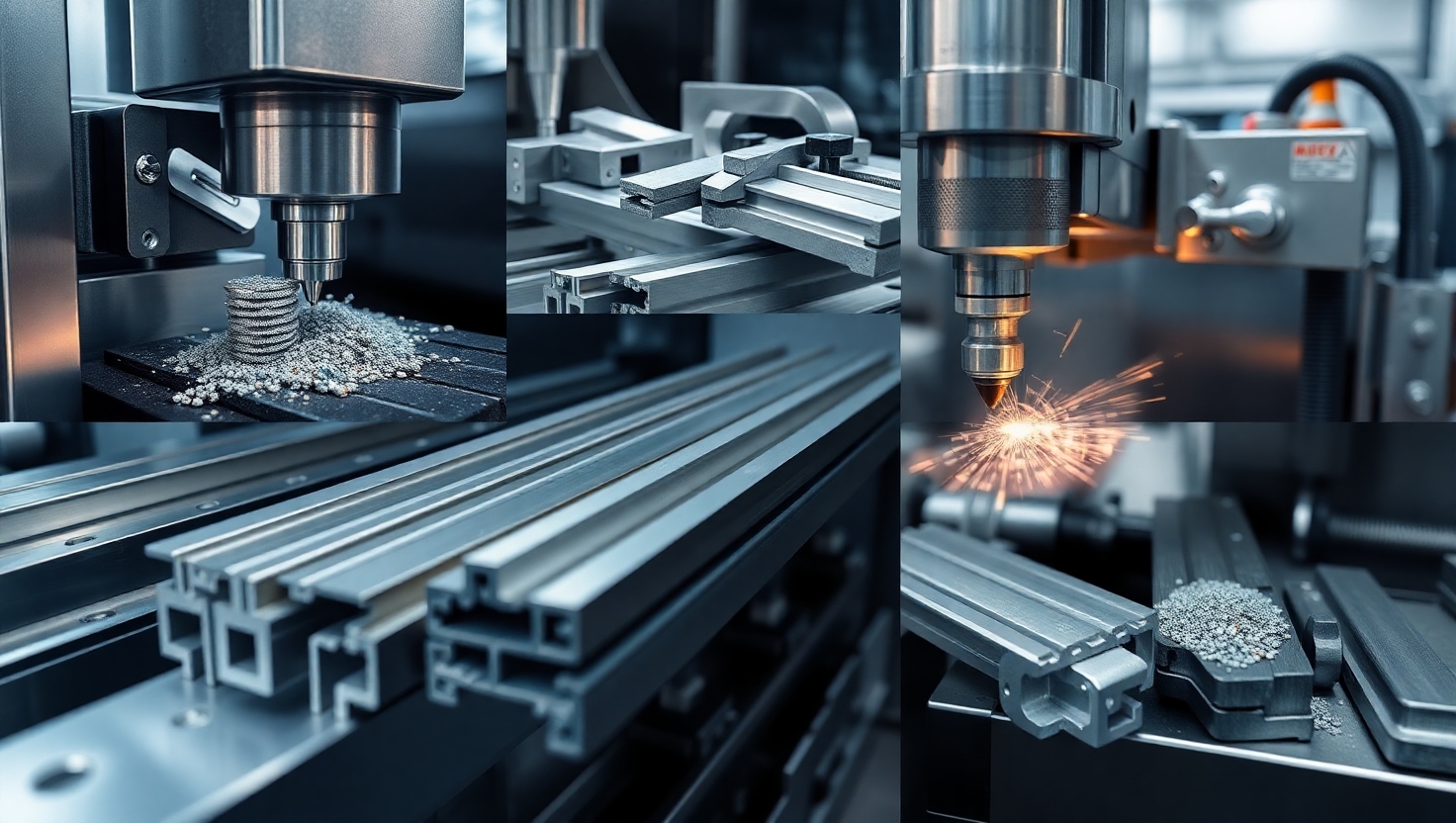Top CNC Machining Processes for Aluminium Extrusion Components
Published by: ALUTimes | Date: July 11, 2025
Introduction
Aluminium extrusion provides incredible design freedom, but many applications require precise post-processing. That’s where CNC (Computer Numerical Control) machining plays a vital role. From architectural brackets to automotive frames, CNC machining ensures tight tolerances, smooth finishes, and customized geometry for extruded components. This guide explores the most widely used CNC machining processes tailored for aluminium extrusion.
Why CNC Machining for Aluminium Extrusions?
Aluminium’s soft nature makes it ideal for CNC processes. CNC offers:
- High accuracy for functional surfaces and fits
- Repeatability for batch production
- Clean finishes with minimal post-processing
- Flexibility for rapid prototyping and mass production
1. CNC Milling
Purpose: Cutting pockets, holes, slots, and contours into aluminium profiles.
Applications: Mounting brackets, decorative panels, structural channels.
Advantages: Multi-axis milling (3, 4, 5-axis) enables complex geometries and surface features. CNC routers are often used for panel-sized extrusions.
2. CNC Turning
Purpose: Produces round or cylindrical shapes by rotating the workpiece.
Applications: Bushings, shafts, tubes, spacers used in sliding doors or automation tracks.
Note: While less common than milling for extrusions, it’s essential for round profile elements.
3. Drilling and Tapping
Purpose: Creates holes and threads for fasteners, inserts, or assembly connections.
Applications: Window frames, curtain wall brackets, control panel mounts.
Best Practices: Use chip evacuation strategies and lubrication to prevent burrs in soft aluminium.
4. Surface Finishing & Deburring
Purpose: Smoothens rough edges post-machining and removes burrs or sharp corners.
Processes Include:
- Deburring tools (manual or automatic)
- Tumbling or vibratory polishing
- Micro-finishing for appearance parts
5. CNC Sawing
Purpose: High-precision cutting of extrusions to specific lengths or angles.
Advantages: Optimized for fast and clean cuts, CNC saws reduce waste and ensure squareness for post-processing.
6. Slotting and Notching
Purpose: Used for interlocking, fitting, or mounting purposes in architectural or automation systems.
Technique: Specialized cutters create interlockable joints or snap-fit designs on the profile edges.
7. CNC Punching
Purpose: Ideal for high-volume hole patterns in thinner extruded sheets or frames.
Applications: Perforated panels, vent covers, lighting grids.
Factors Affecting Machinability of Aluminium
- Alloy Grade: 6061 and 6063 are easier to machine than 7075 or 2024.
- Tool Type: Carbide tools reduce wear and maintain finish quality.
- Coolant Use: Essential to prevent sticking and chip build-up.
Automation in CNC for Aluminium
Many machine shops now integrate robotic arms, pallet changers, and IoT sensors to optimize cycle time and traceability. Cloud-based CNC programs also enable design-to-production workflows with fewer errors and faster lead times.
Industries That Rely on CNC Machining for Aluminium Extrusions
- Automotive (battery trays, roof rails)
- Construction (window systems, curtain walls)
- Aerospace (lightweight frames, brackets)
- Electronics (heat sinks, enclosures)
- Solar and EV (mounting rails, connectors)
Conclusion
Whether you’re a manufacturer or buyer, understanding CNC processes for aluminium extrusion is key to delivering quality, consistency, and design flexibility. From milling and turning to deburring and automation, these processes transform extruded profiles into functional, precise, and durable components fit for demanding industries.
Disclaimer
This article is intended for informational purposes. ALUTimes does not endorse specific machinery brands. Data shared here is based on general industry practices as of 2025.

